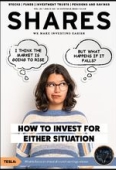Stocks and trusts with exposure to the renewables sector have taken a big hit over legislation to set a temporary cap on their revenue to help lower wholesale energy prices.
Announced on 11 October, the level of the cap is still a matter for consultation but had been expected to take a similar format to the one outlined by the European Union whereby non-gas generators must pay member states the excess profit they generate above a threshold of €180 per megawatt.
UK-listed utilities were lower before the move was unveiled with Centrica (CNA), Drax (DRX) and SSE (SSE) all under pressure.
While there was some relief at the lack of any new windfall taxes when the Government’s energy plan was announced in September, that relief has ultimately proved short-lived.
Shares in renewables trusts had already suffered in the wake of mini-Budget thanks to the impact on discount rates of rising gilt yields.
There are two main components of discount rates. The risk-free rate which is typically the yield on gilts (UK government bonds) and the risk premium. The surge in the risk-free rate has resulted in falling net asset values.
Currently, wind and solar farms built more than eight years ago can sell electricity at the market rate and still claim subsidies, while newer offshore wind projects are already governed by a contracts-for-difference system which limits the price they receive for their output.
Numis comments: ‘While uncertainty remains over a cap being introduced (and the duration, price limit and implementation challenges thereof) it is hard to see renewable investment company shares stage a sustained recovery, despite the attractive qualities of many business models.
‘Portfolios offer a mix of regulated (50% to 60%) and power price exposed revenues. Most funds operate effective hedging strategies, have healthy dividend cover ranging from 1.5 times to 3.8 times, relatively conservative balance sheets, and deliver important levels of investment which are key to achieving net zero carbon targets, and for delivering lower cost power to consumers over the long-term.’
‹ Previous2022-10-13Next ›

 magazine
magazine








